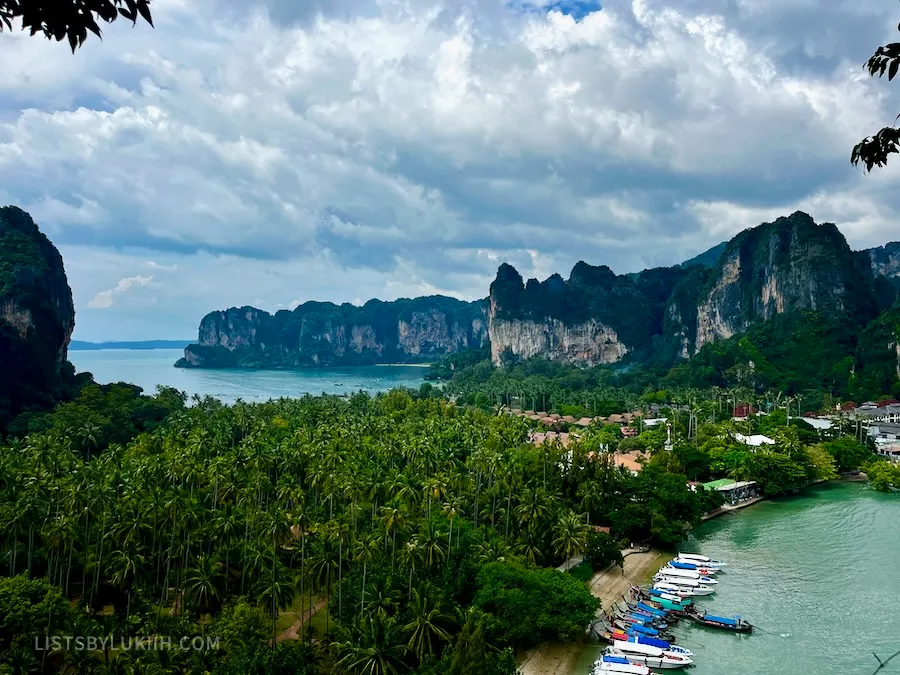Receiving over 28 million tourists last year in 2023, Thailand is an incredibly popular destination in Southeast Asia, known for its stunning Buddhist temples, elephant sanctuaries, and flavorful street food.
Having spent a mesmerizing two weeks in Thailand, I share must-know travel tips that are especially useful for first-time visitors.
Lists By Lukiih is readers-supported. When you buy with my affiliate link, I may earn a small commission. Thanks!
1. Best Places To Visit in Thailand
Thailand is a beautiful country with four main regions: North, Northeast, Central, and South. The Northeast is the least popular for tourists as it is predominantly known for agriculture, so I will focus on the other three regions.
Below are Thailand’s most popular destinations and the top things to see and do in each location.
Best Places in Northern Thailand
Northern Thailand is known for its mountain landscapes, lush forests, and local villages.
📍 Chiang Mai
Chiang Mai is Thailand’s top northern destination and one of the country’s major cities. It’s known for its numerous ancient temples, elephant sanctuaries, and vibrant atmosphere. The city has both traditional and urban infrastructure.
Top attractions in Chiang Mai include:
- Wat Phra That Doi Suthep, one of the city’s most iconic gold-plated temple
- Old City, the historic city center filled with hundreds of temples and home to the popular Sunday Night Market
- Elephant Nature Park, the most ethical elephant conservation park in Thailand
Elephant rides have been proven harmful to elephants, so avoid any elephant camps that offer them. Learn more about the most ethical elephant sanctuaries in Chiang Mai.
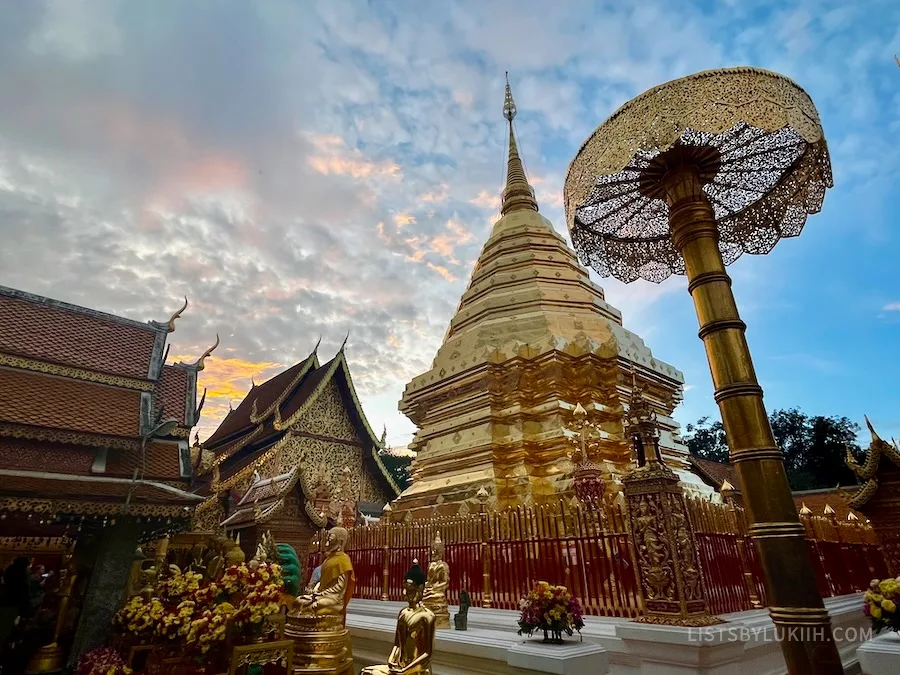
📍 Chiang Rai
Chiang Rai is similar to Chiang Mai but smaller and more tranquil. It’s known for its unique and instantly recognizable temples.
Chiang Rai is four hours from Chiang Mai, so it’s best to visit it as a separate destination. If you don’t have much time, here’s a well-rated Chiang Rai day tour.
Top attractions in Chiang Rai include:
- Wat Rong Khun, the stunning white temple
- Wat Rong Suea Ten, the beautiful blue temple
- Golden Triangle, the point where Thailand, Laos, and Myanmar meet
The Mae Hong Son region is also popular. It’s known for its natural landscapes; most visitors just take a day trip there from Chiang Mai.
🍀 My Take on Northern Thailand
I spent four days in Chiang Mai, and the highlights of my trip were visiting an elephant sanctuary, eating unique northern Thailand dishes during an exceptional food tour, and learning about monk life in a casual conversation.
I visited several beautiful temples (and even hiked to Doi Suthep), but I felt a bit “templed out” by the third day.
See how to spend five days in Chiang Mai.
Best Place in Central Thailand
Central Thailand is best known for being the home of the capital city of Bangkok.
📍 Bangkok
Bangkok is Thailand’s biggest city. It’s a busy urban area that can feel dynamic and overwhelming. The city is known for its iconic temples, floating markets, and shopping malls.
Top tourist attractions in Bangkok include:
- Wat Pho, also known as the Temple of the Reclining Buddha
- The Grand Palace, home of the Emerald Buddha and one of the city’s top attractions
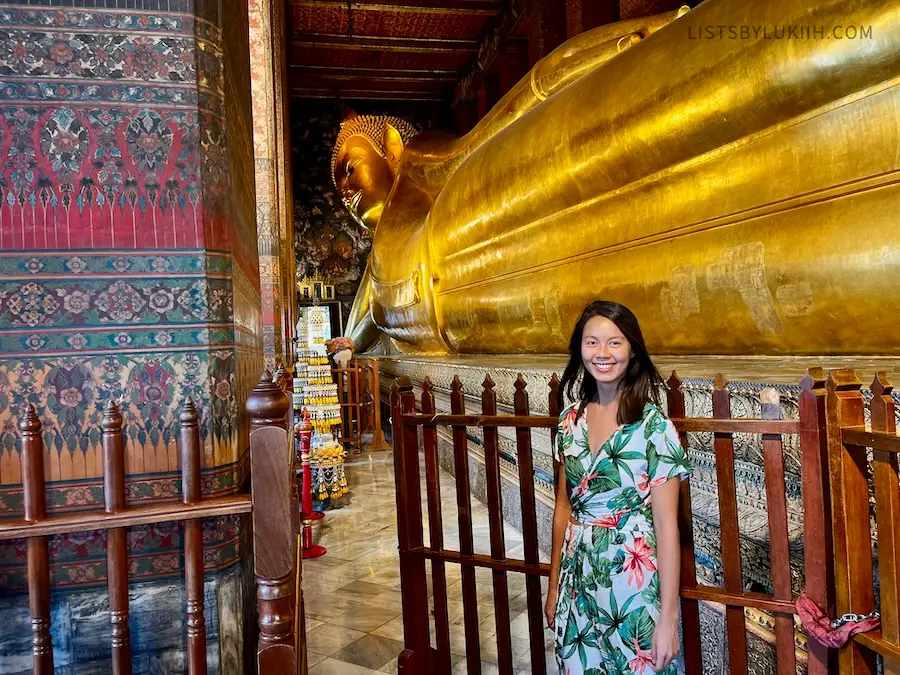
- Wat Arun, also called Temple of Dawn, an iconic temple where visitors can climb up steep steps to see panoramic views of the nearby Chao Phraya River
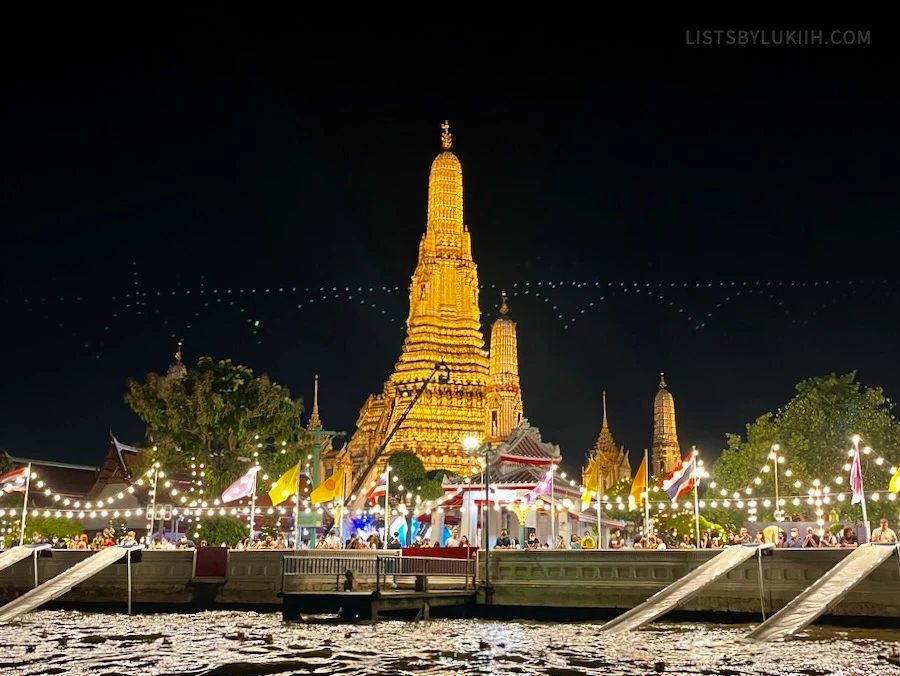
- Damnoen Saduak, the most famous floating market
- Khao San Road, an iconic street known for its vibrant atmosphere and streets lined with food stalls, shops, and street performers
🍀 My Take on Bangkok
I spent two days in Bangkok, and while I was fascinated by the city’s combination of modern and traditional landscapes, I enjoyed it less than my trip to Northern and southern Thailand.
The city just didn’t feel as unique and is similar to other big Asian cities, except maybe a bit more hectic. My Bangkok highlight was this authentic multi-course food tour.
See how to spend two days in Bangkok.
Best Places in Southern Thailand
Southern Thailand is renowned for its beautiful beaches, crystal-clear blue waters, and dramatic limestone cliffs. It is one of the country’s most popular destinations.
Southern Thailand has over 1,000 islands, or “koh” in Thai, and many are popular for different reasons.
📍 Phi Phi Islands
The Phi Phi Islands, which include Koh Phi Phi Don and Koh Phi Phi Leh, are known for their breathtaking natural beauty but are also very popular and crowded.
If you don’t want to spend too much time in such a crowded place, Phi Phi Island can be visited as a day trip from Krabi, which is what I did.

📍 Phuket
Phuket is the largest island off the West Coast and offers stunning beaches with a vibrant nightlife and party scene.
You can take a speedboat from Phuket to visit and snorkel in the Phi Phi Islands as a day trip.
📍 Other Notable Islands
Phi Phi Island and Phuket are some of the most well-known islands, but there are other popular islands as well.
- Koh Samui is a more relaxed island, but it’s still well-known for its nightlife and party scene. It’s often used as a hub for the nearby islands, Koh Tao and Koh Phangan.
- Koh Chang is a larger island that’s a perfect place for nature lovers as it has rainforests, waterfalls, and wildlife.
- Koh Lanta is a great place for travelers looking for a more laid-back and peaceful atmosphere.
- Krabi is not an island, but boasts popular, picturesque beaches like Ao Nang, Railay Beach, and Tonsai Beach. Krabi is also a short boat ride away from the Phi Phi Islands.

Southern Thailand also has the natural gem, Khao Sok National Park, which is one of the oldest rainforests in the world, featuring lush and diverse ecosystems with giant trees. The country has over 100 national parks and they’re largely under-visited.
🍀 My Take on Southern Thailand
I went to Krabi to explore its various beaches, check out the nearby Phi Phi Islands, and rock climb at Railay Beach.
I loved Krabi’s relaxed but still busy atmosphere, and I enjoyed eating at its affordable night market every night.
See how to spend three days in Krabi.
2. When To Visit Thailand
Thailand is a tropical destination with warm temperatures year-round.
☀️ Best Time To Visit Thailand
The best time to visit Thailand is during its cool dry season, which runs from November to February. The weather is not too hot during these months.
⛅️ Thailand’s Seasons
Thailand has three seasons. Here’s a quick overview of its distinct seasons:
| Season | Months | Temperatures |
|---|---|---|
| ⛅️ Cool Season | Nov-Feb | 74-93 °F |
| ☀️ Hot Season | Mar-May | 80-96 °F |
| 🌧️ Wet Season | Jun-Oct | 77-93 °F |
Here are some things to keep in mind about the seasons and climate in Thailand:
- The cool season coincides with the country’s high season where you’ll see more crowds, especially in popular areas like Chiang Mai.
- The hot season is a popular season for Thailand’s beach destinations, so southern Thailand will be most crowded then.
- You’ll experience the most rain during the beginning and end of the monsoon season, which runs from June to October. The rainy season is the low season, but the country will be more lush.
🍀 My Experience With Thailand’s Weather
I traveled to Thailand in November during the cool season and experienced intermittent rain in southern Thailand, but the weather was mostly warm and sunny.
It wasn’t the hot season, but I still felt that the heat was intense, so I was most comfortable wearing loose-fitting clothes.
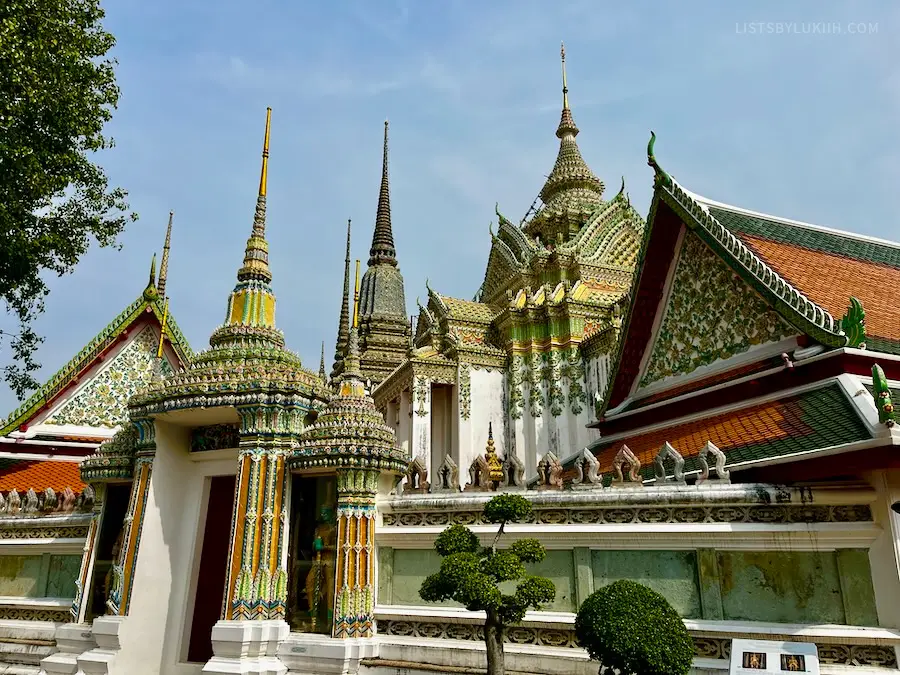
3. How Long To Spend in Thailand
Thailand is a medium-sized country where visitors typically spend ten to fourteen days traveling.
🗓️ How Many Days Do You Need in Thailand?
First-time visitors should spend at least a week in Thailand to see the capital city, Bangkok, and visit one region outside of it to appreciate the country’s beauty.
- With three to five days in Thailand, you have enough time to explore Bangkok and maybe do a nearby day trip.
- With one week in Thailand, you’ll likely only be able to explore one to two regions if you don’t want to feel rushed.
- With two weeks or more in Thailand, you can explore three to five areas around the country.
Transportation times between the different regions can take several hours, especially if you’re not traveling by plane. It’s only worth visiting several regions if you have at least one week.
Check out how to spend ten days in Thailand.
🍀 How Long I Stayed in Thailand
I spent 12 days in Thailand and that gave me enough time to visit three different regions. I could have stayed in Thailand for a longer period of time as I found each region vast and diverse.
Having done the trip, I don’t think I could have fit more attractions or areas into my Thailand itinerary without feeling too rushed.
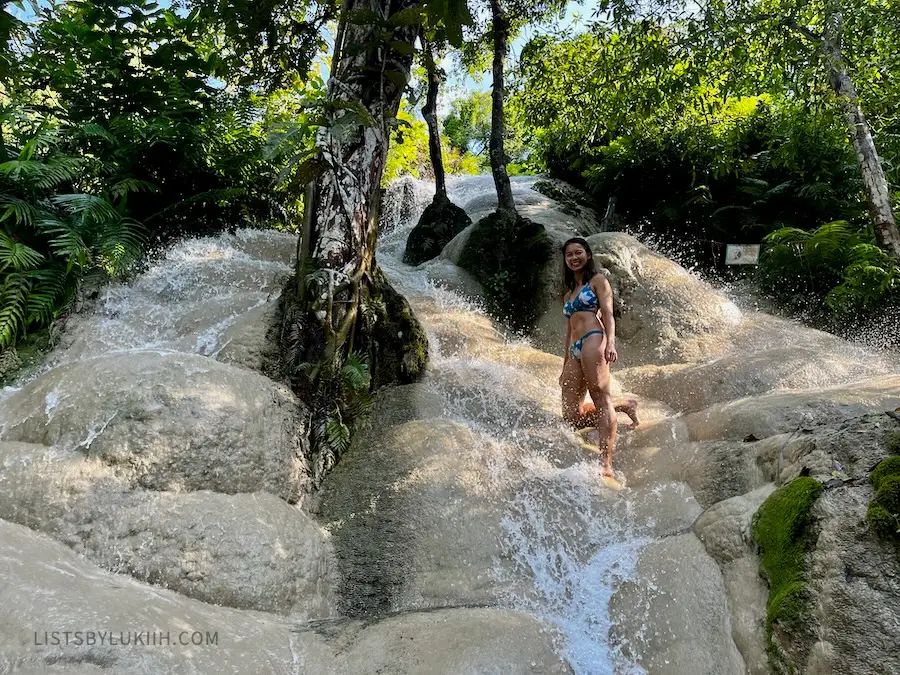
4. Entry Requirements for Thailand
The entry requirement for Thailand is straightforward for US citizens.
🛃 Thailand’s Visa and Passport Requirements
A tourist visa is not required for United States citizens visiting Thailand for up to 30 days.
Also, the US government recommends that your passport be valid for 6 months from the start of your Thailand trip so that you don’t have any issues getting in.
🍀 My Experience Entering Thailand
Being an American citizen comes with the privilege of holding one of the world’s most powerful passports, so I had no issues flying into Bangkok, Thailand.
5. Budgeting and Cash in Thailand
Thailand is a very affordable tourist destination for Asia.
💰 Expected Budget in Thailand
Here’s approximately how much you can expect to spend when visiting Thailand:
| Travel Style | Budget per Day |
|---|---|
| Budget Travelers | $30 |
| Mid-Range Budget Travelers | $75 |
Thailand is ranked as one of the region’s most affordable countries to visit along with Vietnam, Laos, Cambodia, and Indonesia.
🏧 Do You Need Cash In Thailand?
Thailand’s economy is still largely based on cash transactions, so make sure to bring cash. Credit cards are not widely accepted.
Tipping in Thailand is not customary, but locals will gladly accept tips. I always had some cash on hand to tip tour guides.
💵 Are US Dollars Accepted in Thailand?
Thailand’s local currency is the Thai Baht (THB). The US dollar is not widely accepted, so make sure to exchange currencies.
The exchange rate was $1 USD = ฿ 35 at the time of writing.
🍀 My Thailand Trip’s Budget
Thailand is one of the cheapest countries I’ve traveled to. As an American, I was constantly surprised by the prices (e.g., some of my best meals were under $5 there).
I share all my travel expenses in this Thailand budget breakdown and places where I was able to use my credit card.
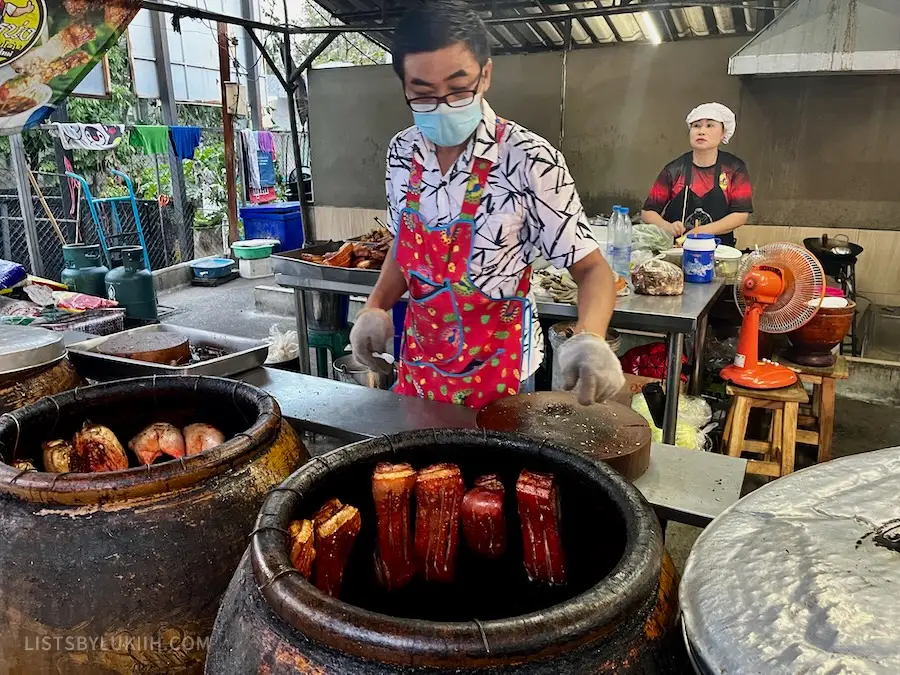
6. How To Get Around in Thailand
You can easily travel around Thailand without needing to rent a car.
✈️ Flying Into Thailand
Thailand has several international airports to fly into and the major ones are:
| Airport | Location | Region |
|---|---|---|
| Chiang Mai International Airport (CNX) | Chiang Mai | Northern Thailand |
| Suvarnabhumi Airport (BKK) | Bangkok | Central Thailand |
| Don Mueang International Airport (DMK) | Bangkok | Central Thailand |
| Phuket International Airport (HKT) | Phuket | Southern Thailand |
| Krabi International Airport (KBV) | Krabi | Southern Thailand |
Once you land in Thailand, there are several common ways to get around the country.
✈️ Option 1: Domestic Flight
Thailand has several airports throughout the country so you can take domestic flights to get to different regions of the country. These flights are usually fast and convenient and will save you a lot of transportation time.
If you’re flying on budget airlines that hop around Asia, be aware of bag weight limits with extra fees. I flew AirAsia and VietJet Air and both had a combined carry-on and checked-bag limit of 7kg (about 15 lbs).
🚌 Option 2: Bus
The most budget-friendly way to get around Thailand is by bus, which can cost less than $1 per trip.
Songthaews, which are red passenger trucks, are also a common local transportation that costs about $2 per ride.
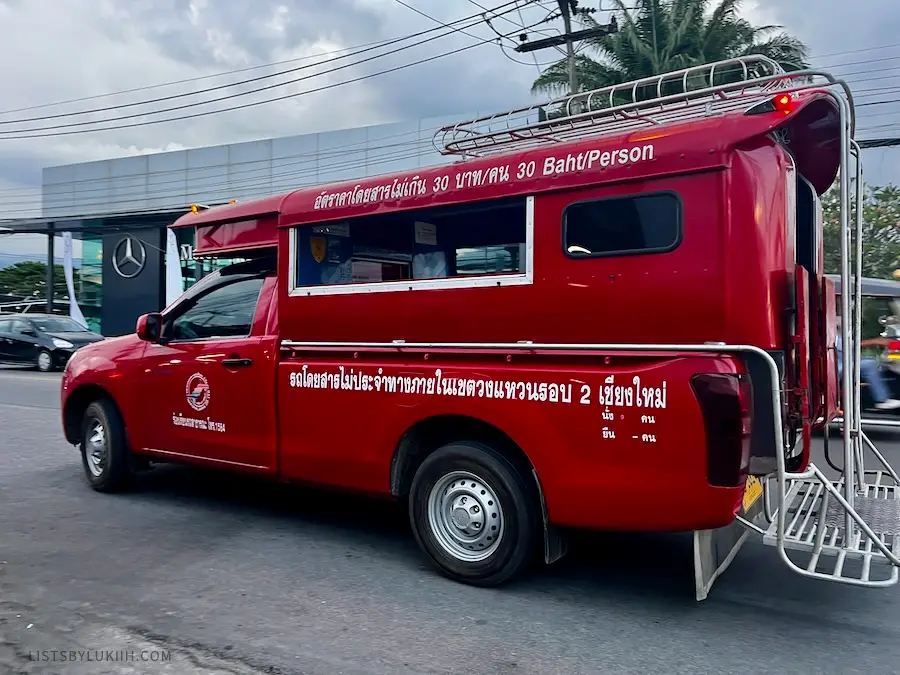
🚙 Option 3: Taxi and Grab
Taxis are also widely available in tourist areas of Thailand.
I highly recommend downloading the Grab app (iOS, Android), the ridesharing app of Southeast Asia. It’s a convenient way to call taxi drivers to get around cities and tourist areas.
🚗 Option 4: Tuk-Tuk
Tuk-tuks are a common form of transportation for covering short distances within a city and can cost less than $5 per trip.
When negotiating with tuk-tuk drivers, use the Grab app to check prices to establish a baseline price.
🚇 Option 5: Public Transportation
Public transport is uncommon in Thailand except in Bangkok, which has the affordable MRT and BTS Skytrain. It’s a good idea to take advantage of them when traveling to and from the airport.
🚤 Option 6: Boat
When visiting the islands of Thailand in the south, a common way of transportation is by boat. In some cases, you’ll need to buy the boat tickets in advance.
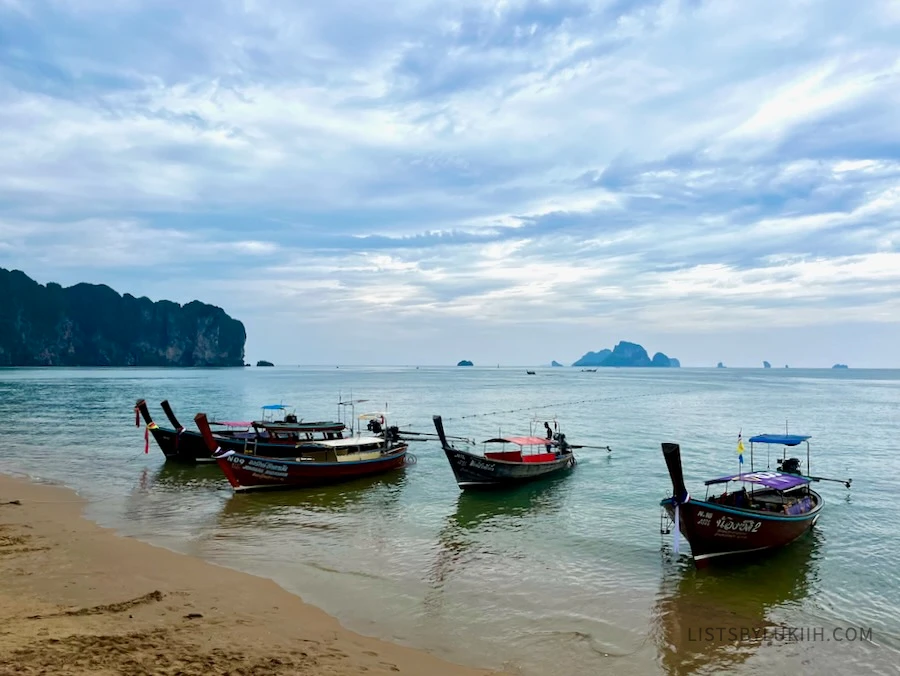
🍀 How I Got Around Thailand
I took cheap domestic flights to travel around the different regions of Thailand which I think is the best way to cover long distances.
I also used several other methods of transportation around the country:
- I used Grab to call motorbikes and cars to get around large cities like Bangkok and Chiang Mai.
Note that Grab motorbikes do not provide a helmet, so you should ride at your own risk.
- When I was in Krabi, I took several boat rides to reach other beach areas or islands like Railay Beach and the Phi Phi Islands. The boat rides were either serene on a wooden boat or fast on a speedboat, so they didn’t give me any motion sickness issues like they typically do.
- I also used tuk-tuks a few times to cover short distances. Usually, I flagged these downs on crowded streets, but negotiating with them was sometimes tricky depending on the driver.
- I took songthaews several times in Chiang Mai and they were very cheap, but largely uncomfortable, so I only recommend them for short distances.
7. How To Stay Safe in Thailand
Here are safety tips to keep in mind when traveling to Thailand.
⚠️ Is Thailand Safe to Visit?
Thailand is considered a safe country to visit and is one of the safest destinations in Southeast Asia.
The most common crimes against tourists in Thailand are petty theft such as pickpocketing and bagsnatching. Violence against tourists is rare.
Thailand has a travel advisory level of 1 per the US Department of State and is ranked #92 out of 163 safest countries by the Global Peace Index (for reference, the United States is ranked #131).
💎 Common Scams in Thailand
Here are common scams to watch out for in Thailand:
- The closed attraction scam involves the scammer telling you that an attraction is closed and they will then offer to take you to another location where they usually earn a commission. Make sure to refuse and stick to your original plan.
- The gem scam involves the scammer selling you luxury items, usually jewelry, at discounted, wholesale prices, but the items are fake and worthless. Don’t buy valuable items from strangers.
- The scooter or jet ski scam, which is most common in Thai islands, involves a scooter or jet ski scammer asking you for your passport to hold as collateral. When you return the rental, they’ll claim that you damaged the vehicle and demand a fee before giving back your passport.
💧 Is Tap Water Safe To Drink in Thailand?
Thailand’s tap water is not safe to drink, so make sure to purchase bottled water from convenience stores and restaurants.
The general word of wisdom is to avoid eating raw vegetables or seafood in Thailand to reduce your chances of food poisoning.
🦟 Does Thailand Have Mosquitoes?
Thailand has a tropical climate and disease-carrying mosquitoes (dengue fever is common), especially during the rainy season, so protect yourself as best as you can.
🍀 My Safety Tips for Thailand
I didn’t have any issues with theft or violence in Thailand, but I was approached by a scammer. Based on my experience, I recommend these safety tips:
- Be aware of common scams in Thailand so you can avoid them. I was approached by a scammer in Bangkok who told me that the Muay Thai match I wanted to see was canceled. I simply stopped engaging with him and he abruptly walked away.
- It’s a good idea to pack insect repellent. I found mosquitoes to be prevalent in Thailand and I was constantly applying bug-repellent lotion every time I stepped outside.
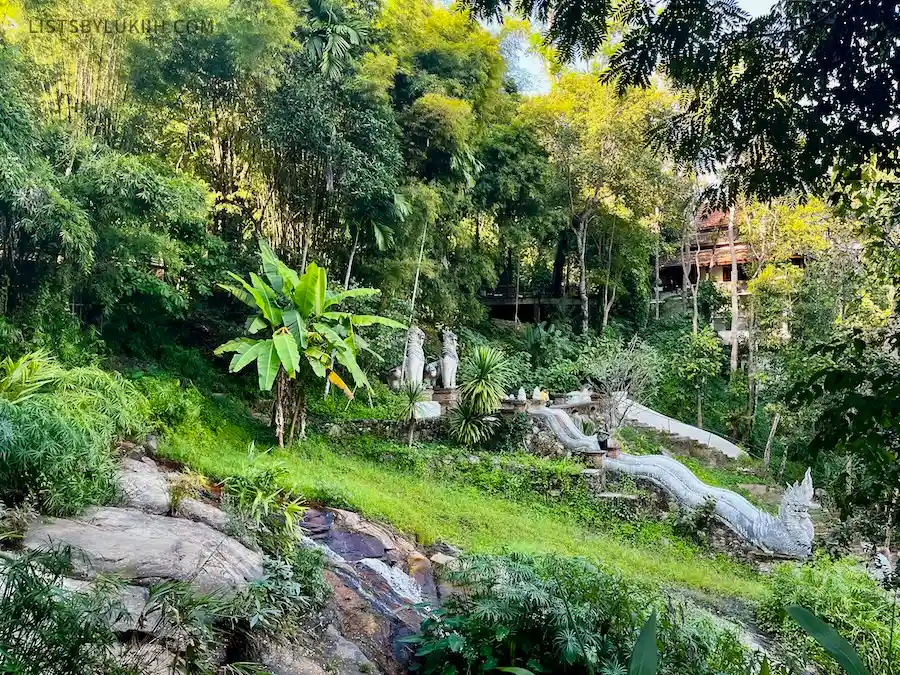
8. Language Barrier in Thailand
Thailand’s official language is Thai.
🗣️ Is English Common in Thailand?
Thailand is more English-friendly than some expect. About 45% of the Thai population speaks some English, but that’s more common in tourist areas.
If you venture into truly local areas, even in large cities like Bangkok and Chiang Mai, you’ll find that English is not widely spoken. Menus and signs will also not be in English.
Here are some common Thai words and phrases to know while visiting Thailand:
| Common Word or Phrase | English Translation |
|---|---|
| Sa-wa-dee | Hello |
| Kap-kun | Thank you |
To be extra polite, you can add “ka” if you’re female and “krub” if you’re male at the end of the phrases (e.g., “sa-wa-dee-ka” for myself).
🍀 Traveling Thailand With Just English
I traveled in tourist areas and did a lot of tours, so I didn’t have any issues navigating Thailand without speaking Thai.
Very local restaurants and shops won’t have any English speakers, so you’ll have to rely on Google Translate and point at menu items in those situations.
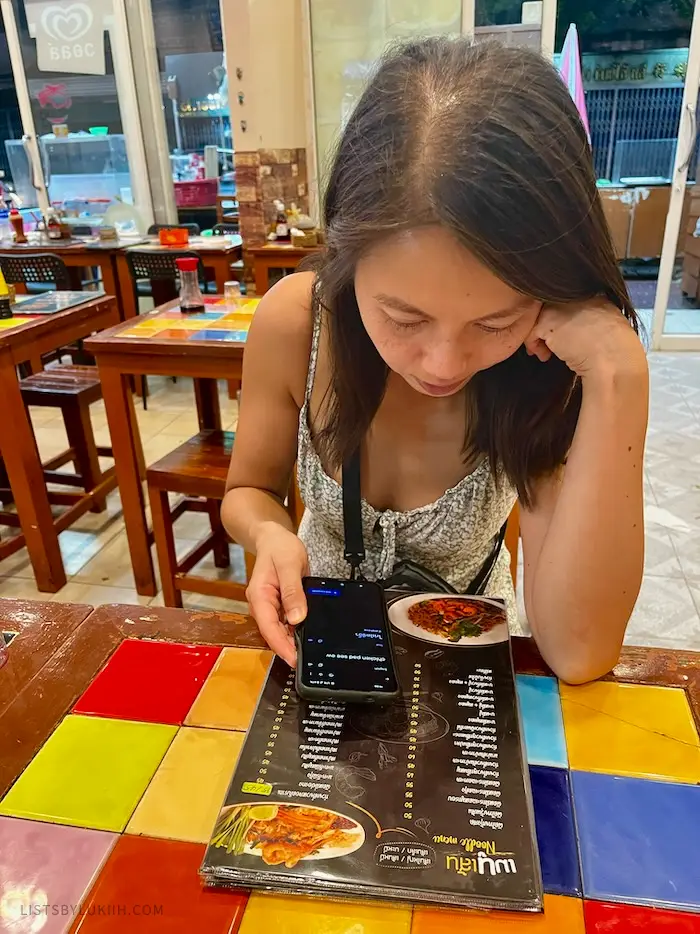
9. Cultural Differences in Thailand
Thailand is a country where 95% of the population is Buddhist.
👟 Proper Etiquette in Thailand
Given the importance of religion, here are some important cultural norms to be aware of when visiting Thailand:
- Different parts of the body have different significance. The head is the most spiritual part of the body, so you shouldn’t touch anyone’s head. The feet are the most impure parts of the body, so don’t put your feet on any furniture or use them to point at things.
- Buddha images are considered sacred, so respect and refrain from touching them. Thai people have deep reverence for Buddha images, so don’t climb or put your feet on Buddha statues.
- Monks are highly respected, so you should not disrespect one. Don’t touch or sit next to a monk if you’re a woman.
An interesting experience in Thailand is having casual conversations with monks. You can find several of these “monk chats” in Chiang Mai.
- The royal family is important in Thailand and Thai law requires you to respect the king and his family, so don’t make fun of or disrespect the monarchy. If you want to play it safe, don’t talk about them in general.
Thai temples also have a fairly strict dress code that you need to follow.
🍀 My Experience With Thailand’s Culture
I went to a monk chat and visited several temples, and those were the two instances when I was most conscious of Thai culture and norms. Tour guides often talk about the importance of the royal family, so it’s a good thing to know to not say anything inappropriate.
Make sure to also carry some toilet paper in a bag as many public bathrooms carry them.
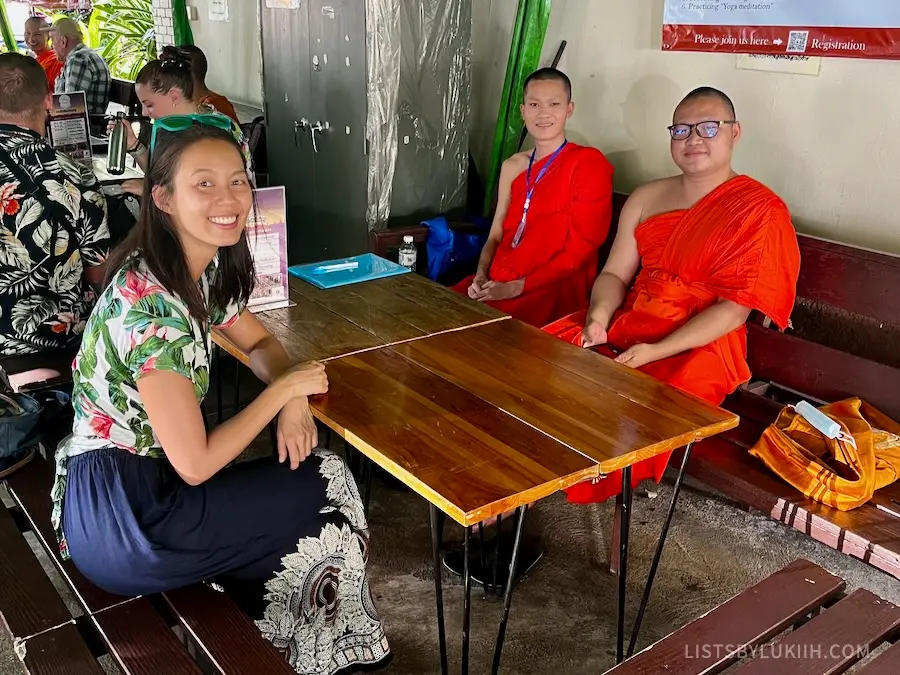
10. Dress Code and What To Wear in Thailand
Here’s what to pack and wear in Thailand.
👕 Clothes To Pack for Thailand
Regardless of the season, Thailand is generally a hot and humid country, so pack and wear loose-fitting clothes to stay comfortable.
Avoid packing jeans as those will also be hard to dry if you get them wet (dryers are not common in Thailand).
Overall, Thai people dress in more conservative ways than people from the United States. You won’t see locals wearing tight-fitting clothes, short shorts, or tank tops despite the heat.
🧣 Temple Dress Code in Thailand
All temples in Thailand require women to cover their knees and shoulders, so pack long skirts and pants. One of the best things to pack or buy is a light scarf that you can throw onto your shoulders or wrap around your legs if you need to cover up.
Several temples in Thailand will also require you to take off your shoes, so pack sandals or shoes that are easy to take off.
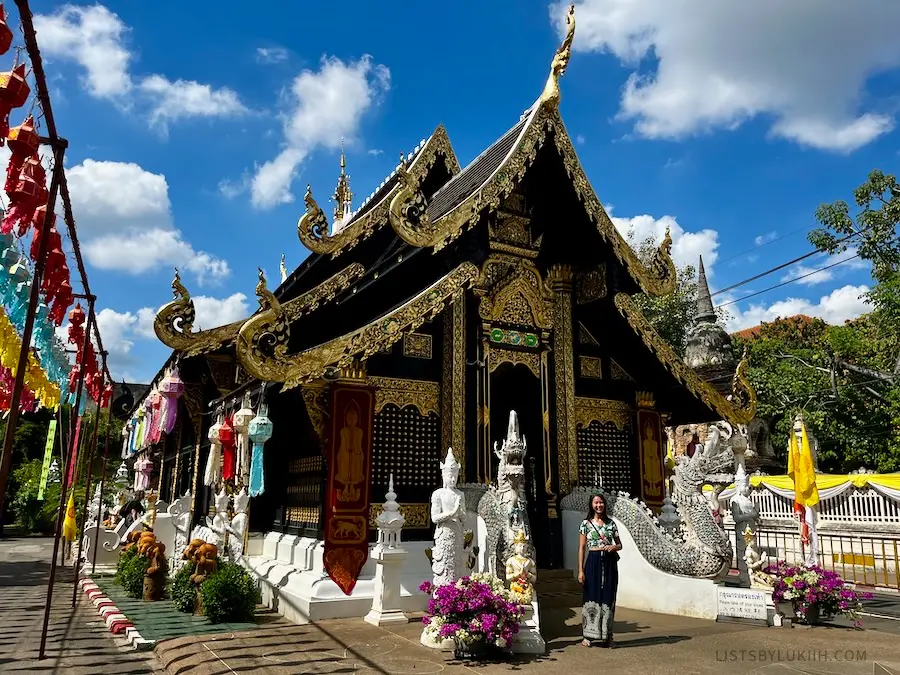
👚 What I Wore for Thailand
I bought light, long, and loose-fitting clothes in Thailand to keep myself covered, but also cool. You can find many of these types of clothes for cheap there.
When I was walking around a temple area in Chiang Mai, I was told to cover my shoulder by a temple employee even when I wasn’t inside the temple, so do know that Thailand has stricter dress codes than some of its neighboring countries.
11. Thai Food To Try
One of the greatest things about visiting Thailand is the flavorful, mouthwatering food that’s also very affordable.
You’ll be able to try many of these dishes at local markets, night markets, food tours, and local restaurants:
- Green papaya salad (som tam) is a refreshing, spicy salad made of shredded papaya.
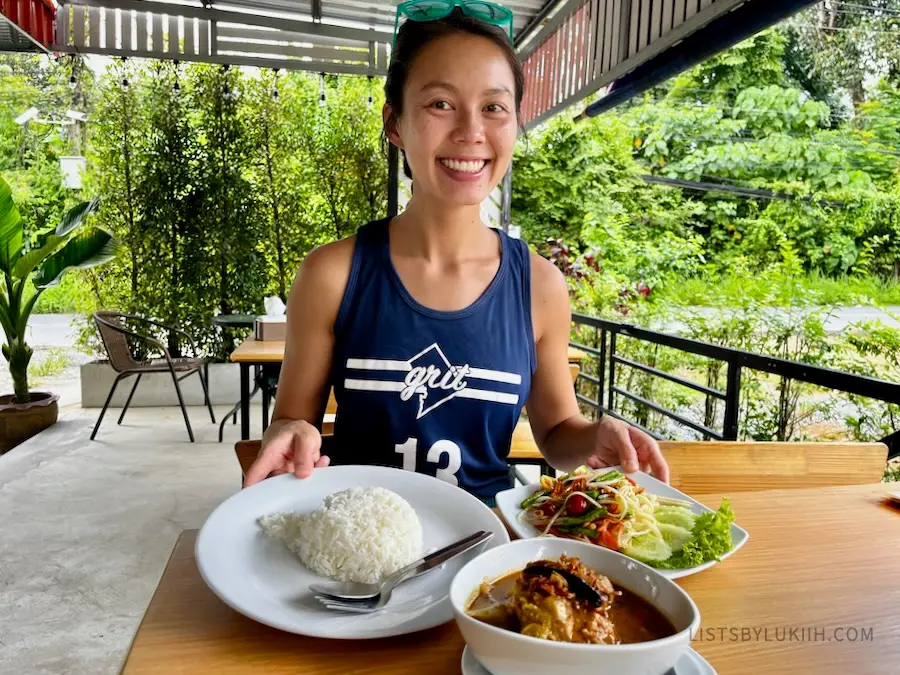
- Pad thai is a flavorful rice noodle dish with eggs, tofu, fish sauce, and shrimp.
- Khao soi is a northern Thailand dish made of egg noodles served in a coconut milk curry.
While visitors are sometimes familiar with typical Thai dishes, keep in mind that each region, especially in northern Thailand, has its own unique cuisine.
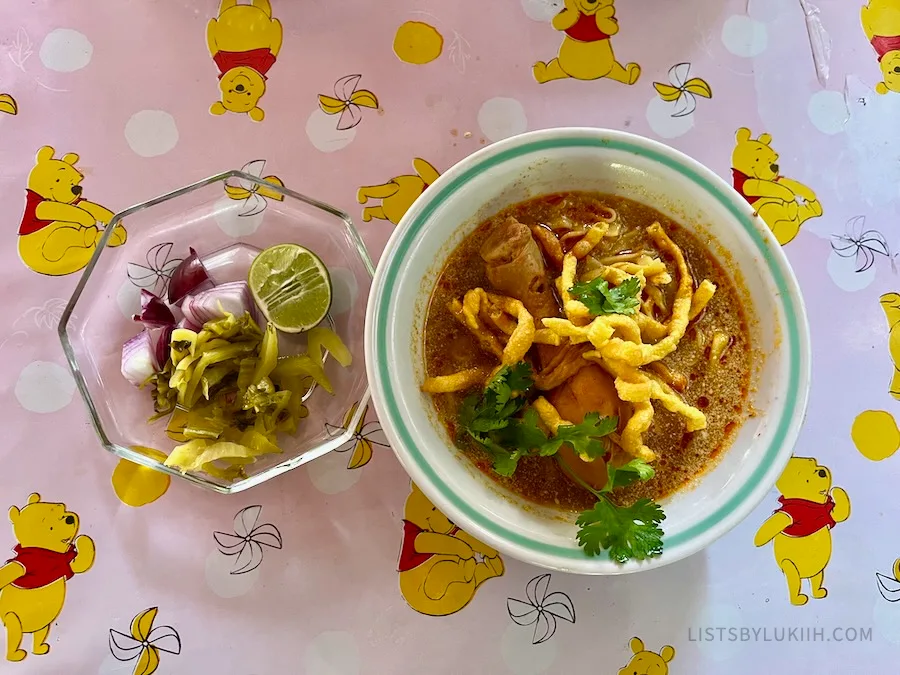
- Gaeng keow wan (green curry) is the spiciest curry dish to try in Thailand.
One thing to keep in mind is that Thai food is very spicy. “Mild spicy” or “no spicy” by Thai standards can be close to very spicy by American standards.
- Pandan-based desserts are also very common in Thailand. Pandan is a tropical plant that’s fragrant and has a unique taste.
- Kao niew ma muang is mango with sticky rice, a popular dessert that’s even popular outside of Thailand.
- Nam ngiaw is a noodle soup and a specialty from northern Thailand. This was one of the more unique noodle dishes I tried.
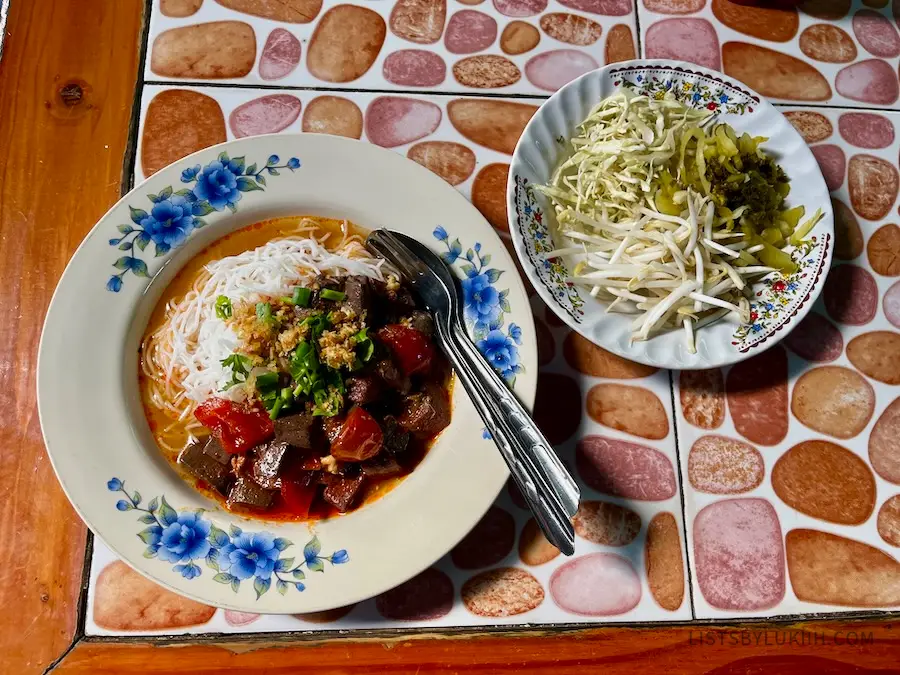
🍀 My Favorite Foods in Thailand
Thailand is home to one of my all-time favorite cuisines. I find most dishes very flavorful and unique, and eating there was one of my trip’s highlights.
I highly recommend going to night markets and food tours to try dishes you wouldn’t otherwise get on your own. I did this authentic food tour in Bangkok and this delicious one in Chiang Mai.
Thoughts? Questions? Leave a comment below.
Thailand Travel Guides
🧋 Support Lukiih
Lists by Lukiih is a humble website that I fund with my own savings. If you find my tips helpful, I appreciate you saying thanks with a bubble tea!
